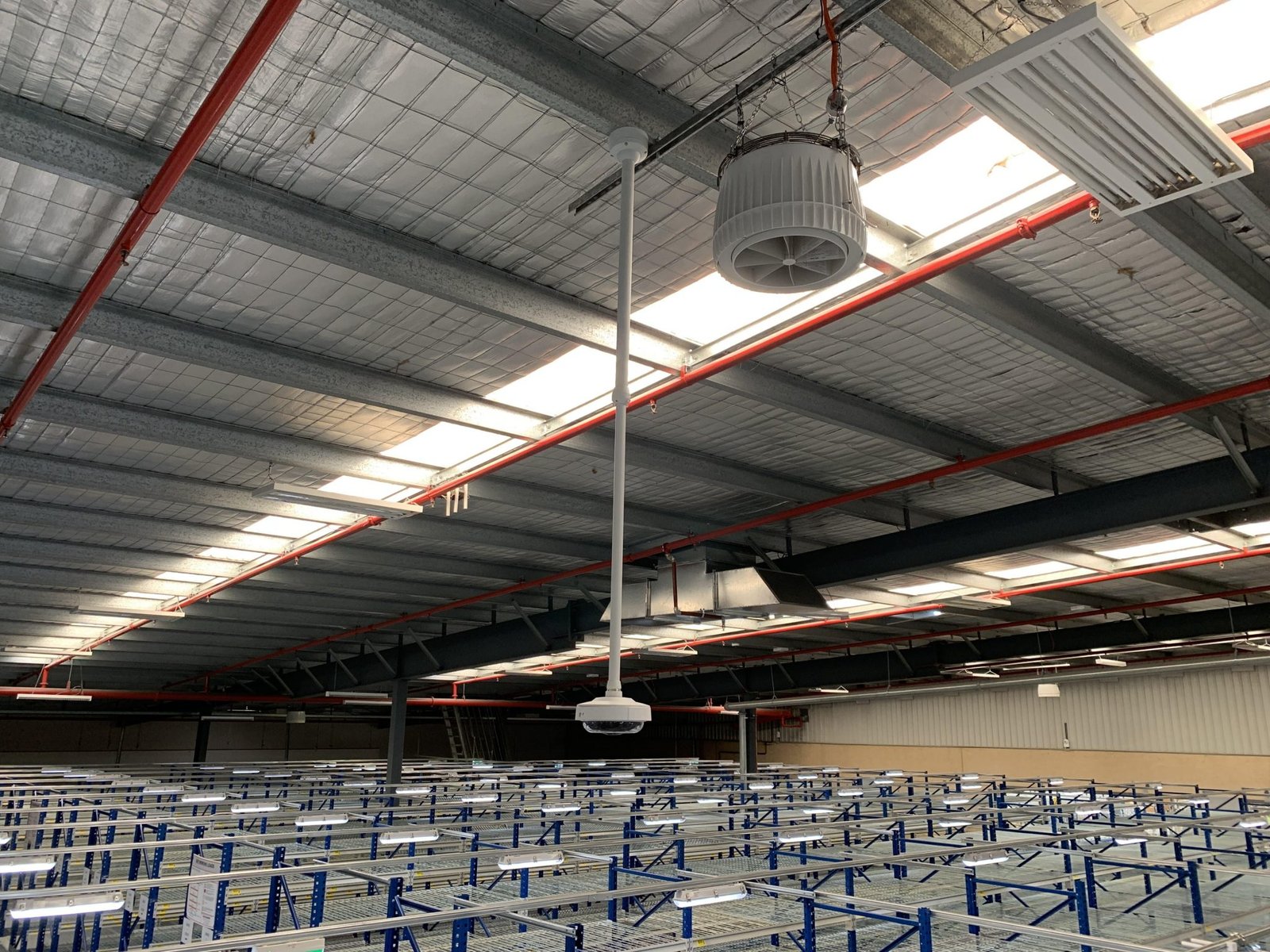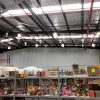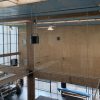Did you know fans will significantly improve productivity and comfort in hot workplace environments?
Over the last couple of years, the attention to heatwaves, and research across thermal comfort and productivity in working environments, has been led by Professor Ollie Jay and a team of researchers at the University of Sydney, along with a selection of other worldwide universities.
Of course, almost everyone wants to air-condition their spaces in heatwave conditions, but there are many reasons why air conditioning is not suitable or cost effective.
Firstly, there is not much logic in air-conditioning large open spaces. In buildings such as warehouses the conditioned air escapes out of open doors, the buildings themselves are often voluminous and tend to have poor insulation, which means air-conditioning is not feasible. Cost and outcomes are prohibitive and ineffective respectively.
Airius Fans are proven as an air movement for cooling solution in industrial workplaces!

Image: Western Sydney distribution centre – G400EC above racking providing cooling airflow to lower levels.
As the world moves faster and faster towards a non-carbon non-anthropogenic global warming scenario, the carbon emissions created by air-conditioning are undesirable and more to the point, unnecessary. With a strong push by governments to embrace a more sustainable future across all building types, the environmental inefficiency of air-conditioning along with the significant capital and running costs, brings an often-forgotten air movement alternative, back into play.
If you were offered a much lower cost solution, that in tropical heatwave conditions, offers a similar outcome of comfort and significantly improved worker productivity over a typical air conditioning system, then your customers and building users and owners, will most likely be very interested.
In the latest academic research on this subject, the research team at the University of Sydney department of Thermal Ergonomics, led by Professor Ollie Jay, have created a research programme that looks at many of these issues and they have found some very interesting and valuable outcomes from their research programme.
For those that are keen to understand how worker comfort and productivity can be significantly improved with a solution that has minimal carbon emissions and a far lower cost than traditional air-conditioning, this research is very informative.
Professor Jay’s research in 2019 compared the use of fans versus air conditioning to improve comfort and increase productivity in heatwave conditions of 30 deg C and 75% humidity. The testing was based upon the conditions of a tropical working environment in Vietnam where warehouses don’t have the budget and were too large to be air-conditioned, yet had workers carrying out high intensity manual labour over prolonged periods of time.
Using a range of processes including simulation of work exertion (110 BPM) and hot tropical conditions in the new thermal laboratory at the University of Sydney, Professor Jay and his team came up with some remarkable research outcomes.
This research considered three scenarios:
- Hot no fan
- Hot with fan
- Air conditioned
The outcomes below, were illuminating.
…. ‘ at a fixed heart rate of 110 beats min −1 , from a simulated tropical environment (HOT; 30 °C, 70%RH; wind < 0.2 m s −1 ) to that observed with either a, (i) 7 °C reduction in air temperature (AC; 23 °C, 70%RH, wind < 0.2 m s −1 ); or (ii) facilitated airflow (FAN; 30 °C, 70%RH, wind = 4.2 m s −1 ). Cumulative work was similarly improved (+ 11%) by FAN compared to AC.’
O Jay et al, 2019, ‘Fanning as an alternative to air conditioning’; Energy and Buildings -accessed 15.06.21
This research shows that air movement in tropical conditions is equivalent to a drop in temperature via chilling air, of 7 deg C. Additionally, and crucially for employers, the use of air movement in these conditions creates an improvement of 11% in productivity over that achieved in an air-conditioned environment!
See the chart below.
What does an 11% improvement in productivity mean to the worker and employer?
This means that in a 40-hour work week, one could expect an output of 4.4 extra hours of productive work per employee. This is the same as each employee working over half a day extra per week, an extra 5.7 weeks of work per year, x that by multiple employees and that’s a far more efficient more comfortable workforce! All for the low cost of some fans. It’s easy to see that the ROI on that expense will be swift!
This improved comfort also means employees are more satisfied in their workplace. A happier workforce can also lead to further productivity improvements and most importantly improved physical health. All of this can be achieved without the costly expense of air-conditioning and it’s related on-costs and carbon contributions.

If we look at the comfort outcomes, similar remarkable outcomes are documented.
….’A greater level of thermal discomfort (Fig. 5 A) was reported in the HOT-NO FAN compared to the HOT-FAN and AC trials ( p < 0.001). Moreover, as trial time progressed a gradual alteration in thermal discomfort was observed (p = 0.007) with a greater level of discomfort reported in the AC trial during the third (p = 0.002) and fourth (p = 0.004) bout of physical work compared to the HOT- FAN trial.’
O Jay et al, 2019, ‘Fanning as an alternative to air conditioning’; Energy and Buildings – accessed 150621
Another interesting outcome is the understanding of the energy and carbon emissions savings observed in this study.
The figures are quite significant.
….’The electricity requirement of the fan used in the present study was 55 W, which is approximately 30-times lower than the wattage required using central air conditioning to cool a 90 m3 working space with 6 occupants with a sedentary rate of metabolic heat production with no additional heat from machinery and equipment. Even if each occupant is targeted with an individual fan, this basic and rather conservative estimate suggests that the electricity requirements and associated CO 2 emissions for convectively cooling each individual could still be one-fifth of air conditioning.’
O Jay et al, 2019, ‘Fanning as an alternative to air conditioning’; Energy and Buildings -accessed 150621
The outcomes and conclusions make very interesting reading if you are an engineer or building/business owner who has some of the following concerns and considerations regarding their building.
- Building is too large and therefore too expensive, to air condition
- Building is located in tropical climate types with high humidity, requiring expensive dehumidification in the air conditioning system, in order to optimise comfort
- Productivity is impacted by overheating building works space
- Building type, design or operations doesn’t allow for air conditioning installation
- Staff and employees overheat, threatening WHS standards
- Staff are complaining and becoming sick due to working in oppressive heatwave type conditions
- Sports and other activities requiring high metabolic rates suffer due to either lack of cooling air flow or inability to afford air conditioning
- Attendees at sports events suffer due to no air conditioning and no air movement
- Capital costs, maintenance and related infrastructure costs as well as practicalities are prohibitive to their implementation of air-conditioned outcomes
- Rebates and government support to move to a low carbon future can be lost if companies resort to air conditioning to improve conditions internally in the space.
Airius are an engineering and manufacturing company who specialise in air movement using a unique and unparalleled type of fan. The Airius fan systems use cutting edge proprietary technology, such as a patented air turbine design and since 2019, the innovative, well researched and patented ‘Bypass Technology’, by Airius, similar in some ways to that used in the latest jet engines.
Additionally, and importantly, if renewables are utilised to power the low energy Airius fans, there will be Zero Net Energy Cooling in a facility. Surely a winning outcome in all ways!
The research and related issues in Professor Jay’s article are raised by engineers, building users and owners worldwide. Airius’ expertise in solving these problems or concerns for customers is what we do everyday!
Airius fans offer controlled and directional airflow, a unique cooling air movement solution. Effective individually and as a system, this air movement offers comfort and improved productivity across a range of climates and building types, meaning Airius are the go-to airflow experts throughout Asia Pacific.
With a significantly lower price point than air conditioning, along with the measurable and significant carbon and energy savings, Airius fans are rebuildable, recyclable and a proven solution methodology used by hundreds of clients across Asia Pacific.
Installed across warehouses, sports halls, gyms, classrooms, fitness studios, supermarkets, retail centres, climbing gyms, theatres, passenger ship terminals, sports stadiums, train stations, cricket centres, indoor pools, art galleries…the list is long and varied. Airius are proud to have a diverse range of success stories.
Now there is independent academic research to back up what Airius already knows. Productivity and thermal comfort improvements all in a low cost, energy efficient, sustainable airflow solution, that’s Airius!
If you have a project, any project, that you feel may benefit from the proven Airius solution, please click below to go through to our “CONTACT US” page.
References
- Fanning as an alternative to air conditioning – A sustainable solution
for reducing indoor occupational heat stress -Energy and Buildings -O. Jay et al; 2019 https://doi.org/10.1016/j.enbuild.2019.03.037

Image: Viking Life Rafts, Caringbah – Model 60EC

With the addition of air purification through PHI or NPBI cells in Airius fans, you can have air movement and an air purification system all in one. Preventing the spread of illness including SARS COV2 (COVID19) and in turn keep attendance high by reducing illness absence, improving wellness and learning outcomes.






thanks for the post.
We are glad you find the article of interest. If you have any questions at all or queries regarding an installation please feel free to contact us at info@ or by calling +61 1300 985 552.
Regards,
The Airius Team